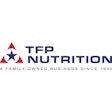Multinational petfood marketers have a problem: the maturity of developed markets. More and more manufacturers have to generate value through new product developments that target evolving consumer trends. Hence they can increase value sales, even when tonnage sales are flat.
Major developed markets are becoming more polarized, with growing demand for premium and superpremium products at one end of the spectrum. At the other end, there is aggressive pricing competition among retailers and the expansion of private label products. Bad news for manufacturers in the mid-priced segment, including world leaders Mars and Nestlé, which are seeing their core brands face an identity crisis, notes Euromonitor. So we see Mars rolling out a high-end petfood brand called the Goodlife Recipe (www.goodliferecipe.com).
Emerging markets' role
With major developed markets seeing growth restrained by maturity, the leading multinational players have looked more to emerging regions to generate growth. These markets have come to play a greater role in the development of global petfood sales. According to Euromonitor, in regions such as Eastern Europe and Asia-Pacific, petfood manufacturers have found market conditions with significant potential as a result of urbanization. The migration to cities has fragmented traditional social structures in emerging markets. Living spaces are becoming smaller and people are delaying starting families due to a desire to pursue the educational and employment opportunities presented by urbanization.
Another result of urbanization is that animals have a much less prominent working role in cities than in rural environments. Consequently, urbanization has contributed to the establishment of the practical and emotional conditions for animals to go from working possessions to pets. Urbanization has also helped raise disposable income levels in emerging markets, reducing the need for animals to earn their keep.
The increase in purchasing power associated with urbanization, along with the improvement to distribution infrastructures resulting from sufficient densities of consumers to support large-scale retail formats such as supermarkets, has driven a significant shift in consumer behavior.
In order to take full advantage of evolving conditions in emerging markets, major multinational manufacturers have sought to deepen their penetration, making significant efforts to raise consumer awareness of petfood and pet care products through aggressive marketing activity. The geographic expansion of major manufacturers has been facilitated by the development of the supermarkets/hypermarkets channel, and the expansion of major retailers such as Wal-Mart, Tesco and Carrefour, with which they have formed strong relationships in more developed markets.
As a result of such developments, the major cities of emerging markets such as China and Russia have witnessed the emergence of trends that mirror those in more developed markets. In emerging markets, most growth has been driven by the popularity of low-priced products. Low levels of disposable income, limited specialist distribution and the habit of feeding animals inexpensive scraps work against the development of higher value products. Besides, multinationals are not the only producers looking to exploit conditions in emerging markets, with a growing number of local manufacturers entering petfood with inexpensive goods that serve to increase the downward pressure on prices.
What's next?
Multinationals are expected to consolidate their global domination, says Euromonitor. They will adapt to evolving conditions in core developed markets and deepen penetration of fast growing emerging markets.















